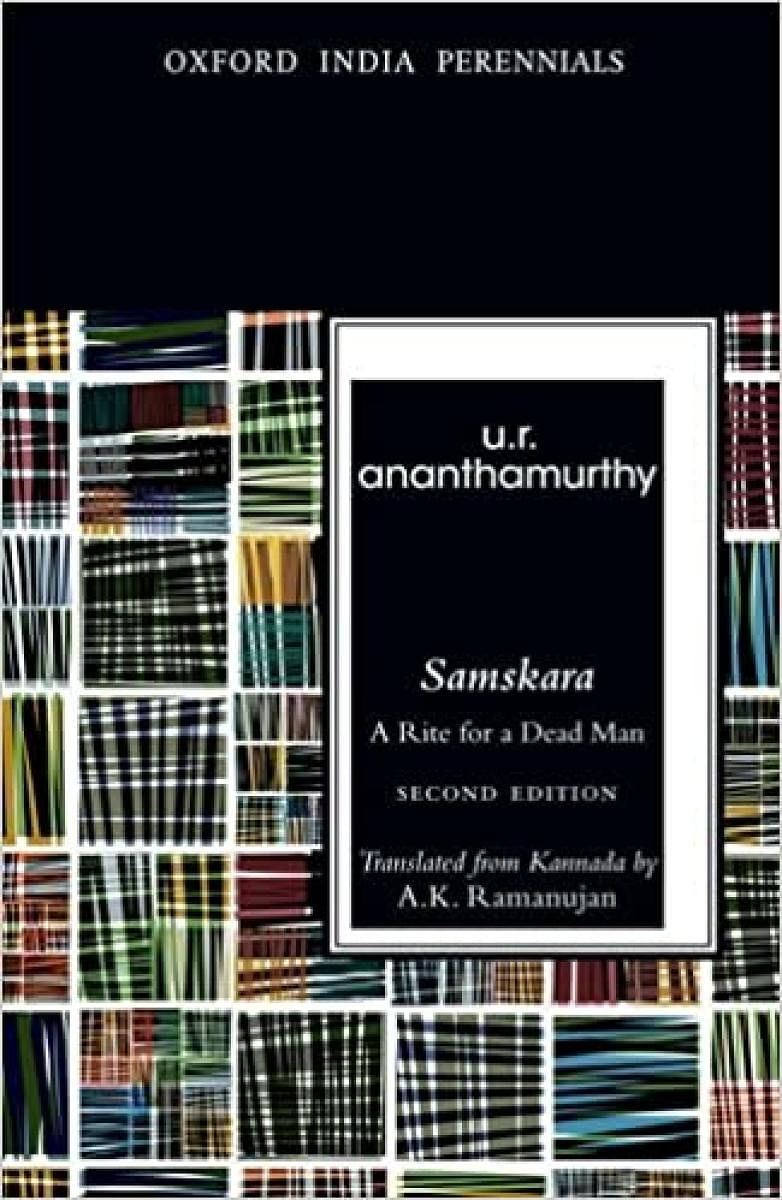
Reading U R Ananthamurthy’s Samskara (translated into English by the renowned scholar A K Ramanujan) in the India of today, you marvel at the courage of the writer and the publisher.
An acclaimed film adaptation was to follow a few years later. Nowadays, a jewellery company can’t make an ad with religious harmony as a theme without getting death threats. Of course, Samskara caused controversy when it came out — it was a sharp commentary on caste, Brahminism, religion and ritual and the hypocrisy that runs rife in orthodox communities. But,its author came through all that to establish a reputation as a master of modern Kannada literature.
The book, as it begins, is ostensibly about one man’s death. Naranappa is a heretic in his agrahara by the Tunga river. He drinks, eats meat, abandons his wife for a woman named Chandri, pokes fun at the rituals and beliefs of his Brahmin family members and goes fishing in the sacred waters with his Muslim neighbours. The rest of the agrahara has debated about excommunicating him — but his threats to convert have paralysed them. The scholar among them, Praneshacharya, a man who is considered a veritable jewel of learning and wisdom, is as doubtful and vacillating as the rest of them, simply hoping the problem would go away.
In a sense, go away Naranappa does, dying on his return from a trip to Shivamogge. It’s quite clear that he had contracted the plague on his visit to that town. And it’s also quite clear that as his relatives bicker about how to give the outcast his final rites, the man is going to cause them more trouble in his death than he did in life.
There follow, over three days, astonishingly painful scenes as Naranappa’s relatives ignore their duties to one of their own. The rot that is setting in within this family is mirrored in the decaying corpse that lies unattended. This inertia, a refusal to show basic empathy and humanity, destroys the living.
Naranappa’s corpse is eventually cremated — but not quite in the way the ancient texts have prescribed. It’s impossible, when reading that bit of the story, to not remember the visuals from the early days of the Covid-19 pandemic in this country when victims had to be cremated and buried by strangers as their own families could or would not go near the deceased.
Samskara is not subtle in its allegory about the illnesses that afflict the body and the soul. Praneshacharya starts out in the book sure of his reputation as a Vedic scholar — and the final third of the story is concerned with his rebirth on his wanderings as he tries to understand how and why he failed to fulfill his duties to Naranappa and the agrahara. The final step of his transformation is left open-ended and there’s no neat resolution to the story.
With its necessary examination of prejudice, inhumanity and greed, Samskara is a masterpiece of Kannada literature that demands to be read and re-read, now more than ever.
The author is a Bangalore-based writer and communications professional with many published short stories and essays to her credit.
That One Book is a fortnightly column that does exactly what it says — takes up one great classic and tells you why it is (still) great. Come, raid the bookshelves with us.